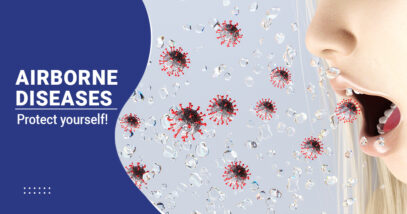“Defending Against Airborne Disease: An In-Depth Prevention “

In an age where health is paramount, understanding and preventing airborne diseases is more critical than ever. Airborne diseases are infections that can be transmitted through tiny respiratory droplets suspended in the airairborne diseases explaining what they are, how they spread, and most importantly, how you can shield yourself and your community from their threats.
What Are Airborne Diseases?
Pathogenic microorganisms like bacteria and viruses cause airborne diseases, which spread through the air. When an infected person coughs, sneezes, talks, or even breathes, they carry these pathogens in respiratory droplets.. Understanding the nature of airborne diseases is the first step in effective prevention.
How Do Airborne Diseases Spread?
Airborne diseases spread through the inhalation of infected respiratory droplets. The various ways in which these tiny droplets can transmit infections, including close person-to-person contact and exposure to contaminated surfaces. Understanding the transmission routes is crucial in crafting preventive measures.
Strategies for Airborne Disease Prevention
Preventing airborne diseases necessitates a multifaceted approach. We’ll provide practical strategies to help you protect yourself and your community. From maintaining good personal hygiene to adopting protective measures like mask-wearing, proper ventilation, and vaccination, this section offers a range of actionable steps you can take.
The Role of Vaccination
Vaccination plays a significant role in preventing airborne diseases. This section discusses the importance of vaccines in building immunity and curbing the spread of diseases. We’ll also address common concerns and misconceptions about vaccinations.
Maintaining Healthy Indoor Air Quality
Indoor air quality is a crucial factor in preventing airborne diseases. Learn how proper ventilation, air filtration, and humidity control can help reduce the concentration of pathogens in enclosed spaces.
The Impact of Personal Hygiene
Personal hygiene practices are fundamental in preventing airborne diseases. We’ll explore the importance of handwashing, respiratory etiquette, and other hygiene measures in reducing the risk of infection.



